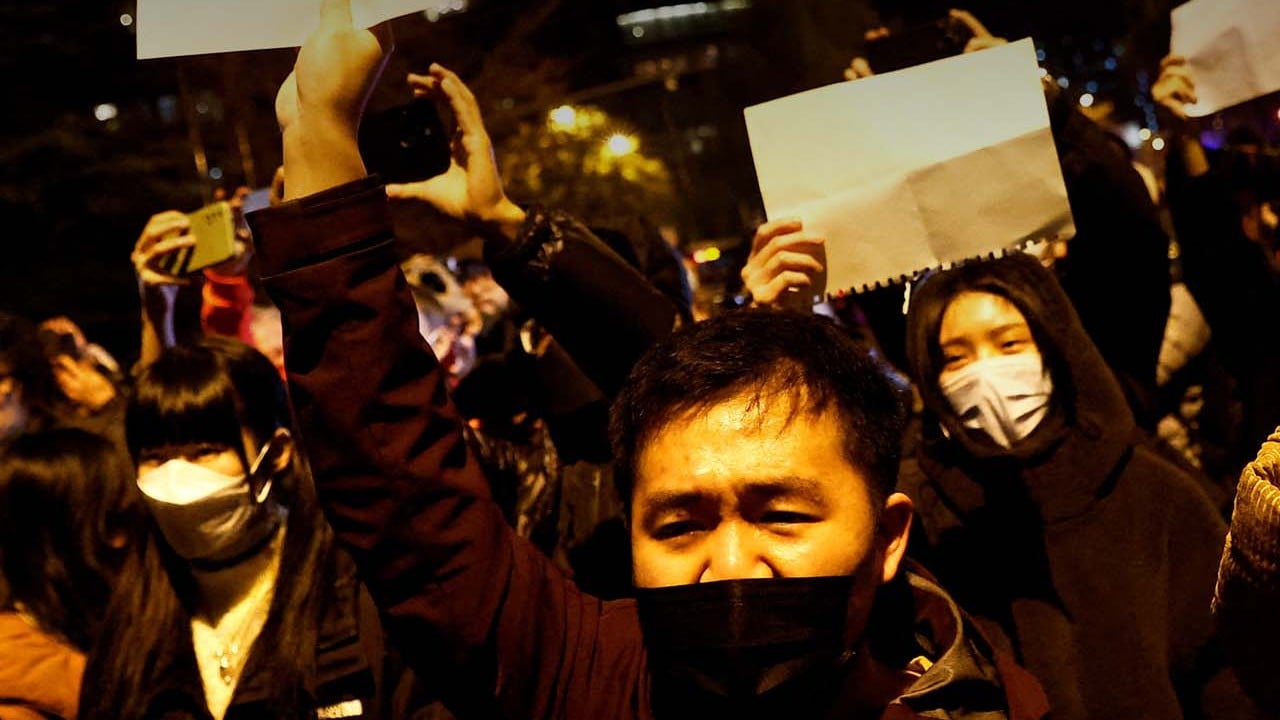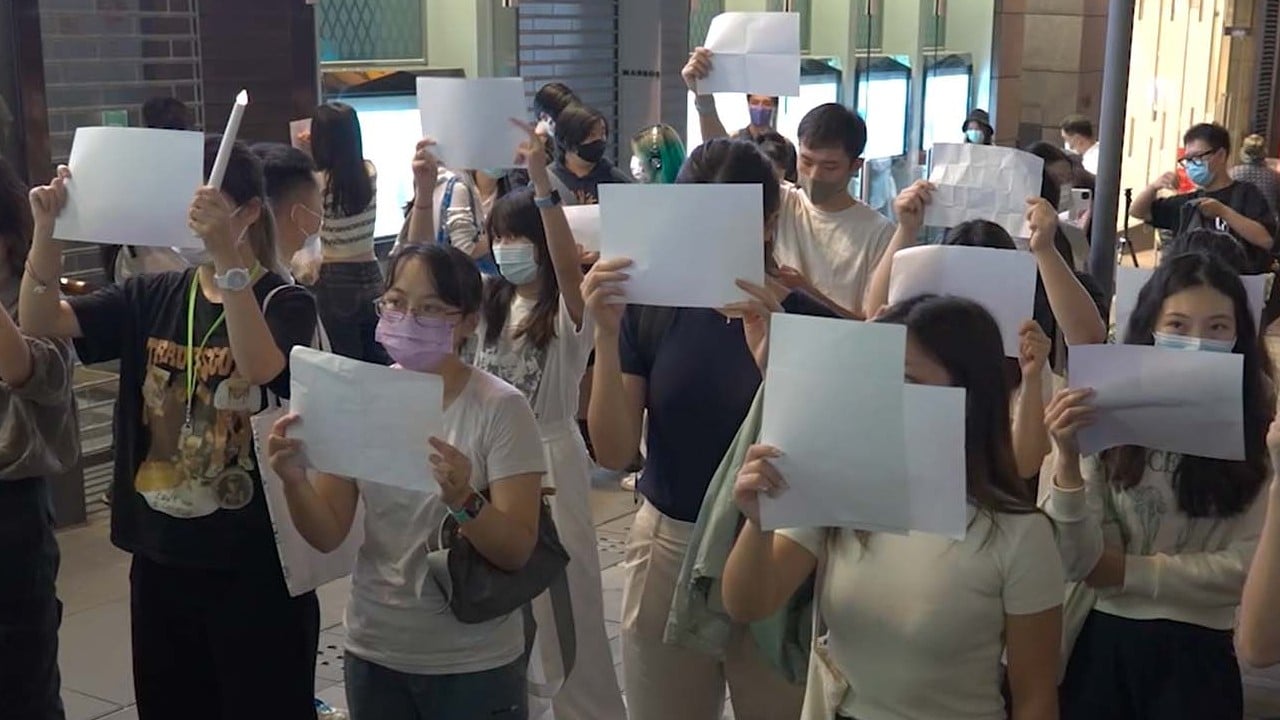
How China hopes to chart path to soft landing after Covid restrictions start to ease
- A feared wave of infections would put enormous stress on the healthcare and public service systems and, Beijing fears, could even trigger political instability
- Improving the relatively low vaccination rates, especially among the elderly, could be a key to how the new strategy plays out
Days after a deadly fire in Urumqi propelled fatigued communities to take to the streets, China has initiated an unannounced yet palpable movement away from its “zero-Covid” strategy by lifting lockdowns, ending mass testing and reopening public venues across key provinces.
But Beijing is concerned that the inevitable wave of infections after restrictions are loosened, could lead to a surge in deaths, overwhelm the health system and trigger political instability.
Policy and public health analysts say there are a number of preconditions that must be met – including fully equipped hospitals, a well-informed population and satisfactory vaccination rates, especially among high-risk groups such as the elderly – if any forceful departure from the policy is to result in a soft landing, where the population coexists with the virus while avoiding a high death rate or economic or political turmoil.
“I don’t think it would be safe to transition away from the zero-Covid strategy in the short-term future,” said Ben Cowling, head of the epidemiology division at the University of Hong Kong’s School of Public Health. “A rapid exit, like that of Hong Kong in February, could result in a public health disaster.”
Using data from Hong Kong’s BA.1 wave, the life science information and analytics company Airfinity predicted that an immediate lifting of zero-Covid policy on the mainland could result in between 167 million and 279 million cases nationwide, and between 1.3 million and 2.1 million deaths.
It is unclear whether Beijing will shift its focus from the number of infections to the number of severe cases and deaths, given the nature of the Omicron variant, which is more transmissible yet less deadly.
“We have to wait a bit longer to see. There were similar discussions about the lower severity of Omicron in Shanghai … earlier this year,” Cowling said.
Inspired by rare mainland protests, Chinese students in North America speak out
According to Professor David Hui Shu-cheong, an infectious disease expert who advises the Hong Kong government, the key markers determining whether a country’s healthcare system can be sustained include vaccination rates; the number of severe cases and deaths; and admissions to intensive care units.
“Upsurges of cases caused by new variants will occur periodically, given that the background immunity in communities is low, after very strict social distancing measures were imposed for nearly three years,” said Hui, who predicts an increase in deaths among unvaccinated high-risk groups.
Because it has been shielded by the zero-Covid policy, China’s population has low immunity from the disease. The vaccination rate, especially of the elderly, is worryingly low – 68.7 per cent of those aged 60 and older have had three shots, while the rate is just 40.4 per cent of those aged 80 and above, according to official figures.
A campaign to vaccinate more elderly people has begun, but it is too early to gauge its success.

“[The upsurges] are manageable if they allow home isolation and provide oral antiviral to the mild cases, and home quarantine for the close contacts,” said Hui.
Authorities have yet to declare that the policy is ending, but first-tier cities including Beijing, Shanghai, Guangzhou and Zhengzhou have partly reopened. Almost overnight, testing stations were removed. It was announced on Wednesday that those who tested positive, as well as their close contacts, could isolate at home instead of being sent to centralised facilities.
The Lunar New Year, which begins in a month, will be a test, as Chunyun, or “spring movement”, sees millions of workers travelling across the country for the holidays. But Hui said he did not think Beijing would hold onto the zero-Covid policy any longer. “They can introduce vaccine passes and allow people who have received at least three doses of vaccines to travel more freely,” he said.
The first sign that the three-year-old policy was being phased out was Chinese vice-premier Sun Chunlan’s acknowledgement, on November 30, that the country was “facing a new situation and new tasks”, with the Omicron variant being more transmissible but less deadly.
China’s fatal bus crash sparks online outcry over Covid-19 controls
“With the people at the centre, prevention and control work must steadily progress, policies will continue to be optimised in small steps but without stopping,” she said, adding that “measures for diagnosis, testing, admission and isolation must be constantly improved”.
Alfred Wu Muluan, associate professor of public policy at the National University of Singapore, said the hasty changes reflected a “tussle” between the central and local governments, as well as between different stakeholders.
“Unless we get a very clear response, such as President Xi Jinping speaking himself, we can’t say it’s the end of the zero-Covid policy for now,” Wu said.
The policy may be abandoned if infections rise significantly, with the virus being widespread and uncontrollable. “Then China will be forced to live with Covid,” Wu said, adding that a continuation of “dynamic zero” would equally require an announcement.

Beijing is working to strike a balance between social fatigue, economic impact and public health objectives, said Andy Mok, a senior research fellow at the Centre for China and Globalisation, a non-governmental think tank in Beijing.
“A full reopening is likely to occur in phases defined by both geography and degree, which would allow the healthcare system to adjust to the increased demand and ensure that it is able to cope with any potential surge in cases,” said Mok, adding that vaccination, patient treatments and surveillance measures also would continue.
He added: “Covid-19 restrictions have created distinct but intersecting types of hardships, ranging from business closures and resulting loss of income or wages, to fears of being sent to central quarantine. Each of these localised difficulties have sparked specific protests and require local solutions, such as workers in Zhengzhou who were unhappy about working conditions and were later promised compensation.”
Last month violent clashes between workers and security forces erupted at a factory operated by iPhone producer Foxconn. The Taiwanese company said “some new hires” at the Zhengzhou campus had complained about work allowances, while workers said the company had failed to honour recruitment promises.
Anti-Covid lockdown protests flare across China after deadly Urumqi fire
Mok said that Beijing “places great store by” public sentiment, and that some observers misunderstand domestic protests or blow them out of proportion, adding that “foreign elements” had been trying to “turn the dry kindling of frustration with restrictions into a raging bonfire that they hope will bring down the government and destroy social stability and the hard-earned prosperity of the Chinese people”.
Protests on the mainland played a large role in causing the change in messaging, according to a professor of political science at Fudan University, who asked to be referred to by the pseudonym Alice.
“The sudden protests have disrupted the original zero-Covid approach,” she said, pointing out inconsistencies between the provinces’ renewed practices. “Orders from the government are not aligned, neither are the systems of decision-making and execution.”
The central government’s directives are inconsistently followed by local authorities, causing frustration and leading to disparities in quality of life across regions.
Some groups may be unwilling to see the policy abandoned, Alice said, referring particularly to the nucleic acid testing industry, which has grown over the months of compulsory mass testing. Scrutiny of Covid-related businesses has risen recently amid accusations that the companies have thrived amid the pandemic.
“Quickly returning to normality is not easy, given that all aspects of society have been distorted and deformed by the zero-Covid policy. Imagine what would happen if a hefty vehicle were to make a sudden turn,” Alice said.
While domestic protests against the policy have largely stopped, infection rates are rising to new levels. China reported 25,321 new cases on Wednesday, of which 4,919 were in Guangdong and 3,974 in Beijing.
China shouldn’t take public support of ‘zero-Covid’ policy for granted
“Maybe there is only one exit, and that is no more testing, no more statistics and publications, and to reduce Covid-19 to a class B infectious disease,” said Alice. China’s Infectious Diseases Law allocates 37 infectious diseases into three classes that require different preventive and control measures.
“As far as the current stage is concerned, we can only do this – stop building isolation centres; allow patients to be isolated at home, if conditions permit; and greatly reduce the screening and mandatory isolation requirements for close contacts and secondary contacts,” Alice said.
Many cities have begun implementing these changes.
The biggest difficulty facing China in the new phase is the unvaccinated high-risk groups, Alice said.
“How do we protect the elderly who are very old and have an underlying medical history? It is very difficult to do so without a highly effective vaccine. Nursing homes and other places have become high-risk places, which happened on a large scale in Shanghai this year.”



